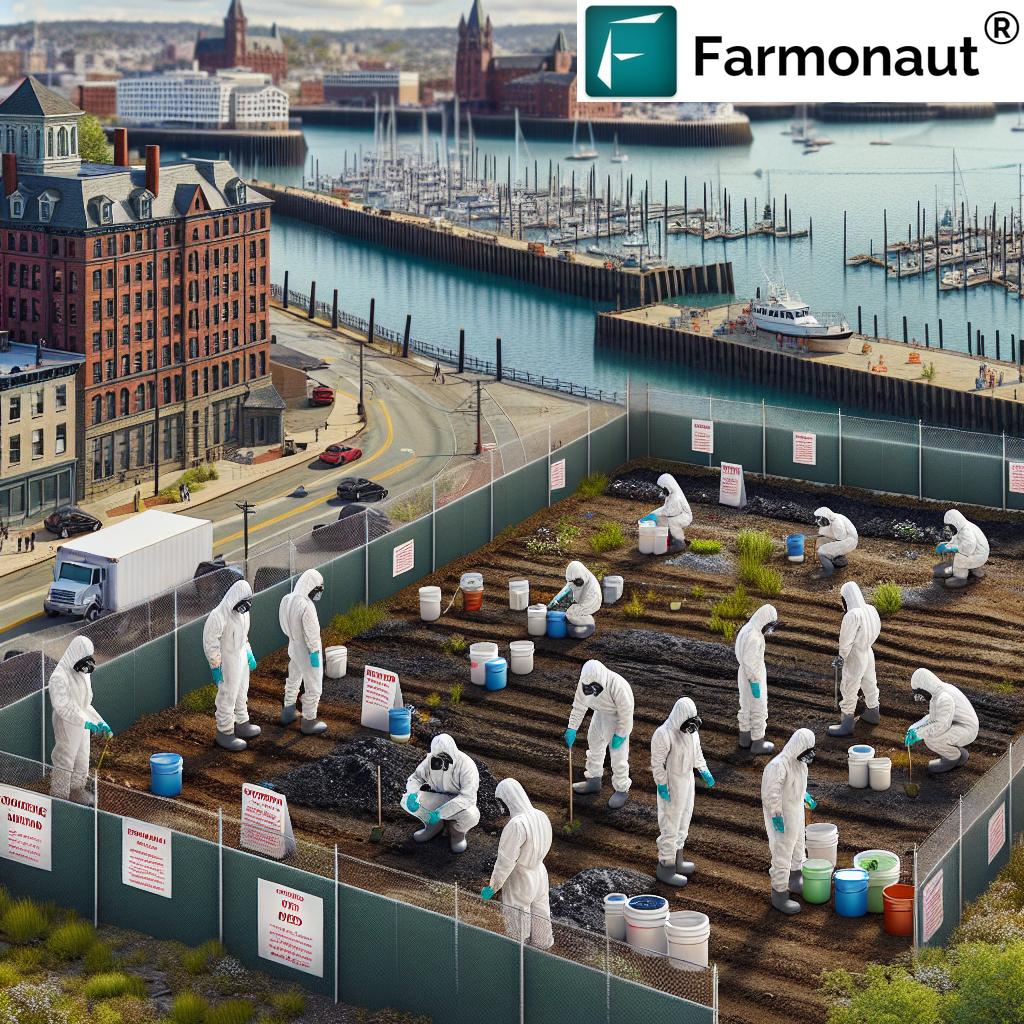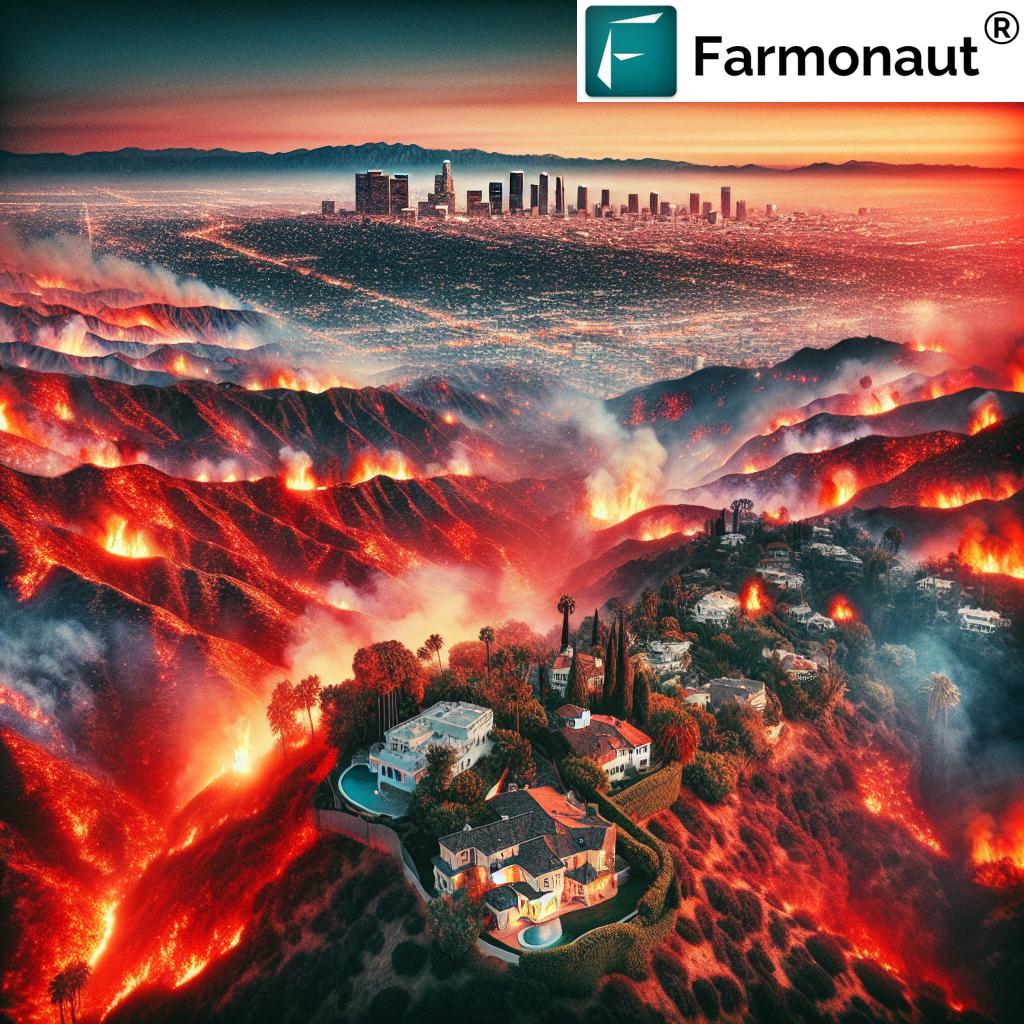Brownfield Cleanup Grant Transforms Bar Harbor Soil for Safe Play
“Over $500,000 in brownfield grants helped Bar Harbor remediate contaminated soil, creating safe play areas for local youth.”
Introduction: Why Brownfield Cleanup Matters
As communities across Maine and the United States strive to create safe, sustainable environments, addressing hazardous chemicals in soil is not simply a technical challenge—it is a public health imperative. When children cannot play safely on their local green lot or when urban redevelopment is stalled by the presence of contaminants, the consequences ripple through neighborhoods, local economies, and the environment.
In the heart of Bar Harbor on Mount Desert Island, this issue came to the fore at the MDI YMCA Park Street campus. Soil laden with arsenic, lead, and coal ash fundamentally threatened the community’s environmental protection goals and the well-being of its youth. But, thanks to a targeted brownfield cleanup grant from the U.S. Environmental Protection Agency (EPA), this stretch of contaminated ground is now on a promising path to safe renewal.
We’ll explore how comprehensive contaminated soil remediation and urban green space revitalization efforts, supported by federal funding and the latest environmental site assessment protocols, will restore this vital recreational space and reinforce Bar Harbor’s commitment to community and youth safety.
Defining Brownfields in Maine
Let’s start with the basics: In Maine, a brownfield is broadly defined as “real property, the expansion, redevelopment, or reuse of which may be complicated by the presence or potential presence of a hazardous substance, pollutant, or contaminant.” These sites range from abandoned industrial properties to underutilized urban lots, often located just steps away from schools, parks, and town centers such as our own Park Street campus.
The state of Maine has identified hundreds of such locations, and thanks to dedicated brownfield cleanup grant programs, the daunting challenge of soil cleanup in Maine can be met with the proper funding, regulatory oversight, and community involvement. Early detection through thorough environmental site assessment is a crucial first step, ensuring the safe reutilization of land and the long-term protection of local residents.
In Bar Harbor, the MDI YMCA site represents a textbook example of why these efforts matter: the campus is not only a community hub, but a place where children’s health is directly affected by environmental safety decisions.
Brownfield Cleanup Grant: Funding Contaminated Soil Remediation in Bar Harbor
In June 2024, the U.S. Environmental Protection Agency awarded $510,000 to the town of Bar Harbor as a brownfield cleanup grant aimed at remediating contaminated soils on a portion of the Mount Desert Island YMCA Park Street campus. This funding is a cornerstone for the local vision of transforming hazardous areas into safe play areas for children and vibrant green spaces.
According to Bar Harbor’s Town Manager James Smith, “This is a big win for Bar Harbor, and it reflects the incredible teamwork behind the scenes… This funding helps us protect children, expand access to recreation, and invest in the community’s future.”
This grant is directly supporting vital environmental and health improvements by:
- Enabling the systematic removal and disposal of contaminated soils
- Facilitating the installation of protective soil layer markers
- Restoring urban green space used for youth programs and recreation
- Supporting long-term community environmental protection and sustainable site redevelopment
Without such brownfield cleanup funding, proactive contaminated soil remediation would be far less feasible. Bar Harbor is now better equipped to reclaim portions of land—specifically at 21 Park Street—that had been closed due to hazardous chemical levels.
Hazardous Chemicals in Bar Harbor Soil: Lead, Arsenic & Coal Ash
The presence of hazardous chemicals such as arsenic, lead, and compounds related to coal ash in the top three feet of soil represents a significant risk. These contaminants are not just legacies of previous urban use; they are active threats to the, youth, and families who use the lot for play and gathering.
Let’s break down the primary unsafe elements found at the MDI YMCA campus:
- Arsenic: Chronic exposure can cause skin lesions, developmental effects, cardiovascular issues, and increased cancer risk.
- Lead: Especially dangerous to children, lead can severely affect brain development, behavior, and learning ability.
- Coal Ash: Contains heavy metals and radioactive elements that can leach into soil and water, heightening carcinogenic risks.
The 2023 environmental assessment revealed that 31 borings into the soil and around the building’s foundation confirmed the presence of unsafe levels of these and other compounds. For instance, eight key contaminants tested over the state’s remedial action guideline levels.
Because the lot and building are owned by the town, responsibility for site protection falls directly to Bar Harbor’s local government. Their rapid response—including closing affected portions of the yard and launching a detailed study—exemplarizes environmental leadership.
Phase II Environmental Site Assessment & MDI YMCA Soil Challenges
A critical turning point for the Bar Harbor cleanup effort was the Phase II Environmental Site Assessment conducted by Beacon Environmental Consultants LLC. This comprehensive report involved thorough soil sampling around the entire perimeter of the YMCA building and led to several key findings:
- Widespread urban fill (not just unsuitable fill) found beneath the campus
- Significant concentrations of lead and arsenic posing known health risks
- Portion of green yard/play space exceeding state safety guidelines for children’s recreation
- Presence of potentially carcinogenic elements in the soil—requiring urgent remediation
The assessment informed vital decisions about the future of the site:
- Whether to do nothing (not recommended)
- Complete soil removal and off-site disposal
- Limited soil removal with the installation of a marker layer as a boundary and added safeguard
Guided by these findings, the town board, trustees, and YMCA leadership collaborated to define a remediation approach that balanced environmental rigor, cost, and long-term community benefits.
- Looking to integrate precise, real-time satellite and weather data into your environmental monitoring or urban planning systems? Try the Farmonaut API and access the Developer Documentation.
Protecting Community & Youth: Safe Urban Recreational Space Revitalization
The goal of the Bar Harbor brownfield cleanup grant extends far beyond removing hazardous chemicals from the soil. It’s about restoring safe, healthy spaces for youth, families, and all local residents. Here’s what our renewed urban green space means:
- Reopened Play Yards: Children and teens regain their outdoor play spaces, improving physical and mental health outcomes.
- Access to Environmental Education: Once remediation is complete, the site can serve as a platform for outdoor, hands-on learning about sustainability, soil, and health.
- Improved Community Cohesion: A revitalized, green campus draws in programming, events, and everyday recreation—strengthening bonds across Bar Harbor and Mount Desert Island.
- Sustainable Urban Development: Environmental site remediation demonstrates how responsible, sustainable practices in urban cores can yield lifelong benefits.
“Bar Harbor’s soil cleanup project revitalized over 2 acres of urban green space, directly benefiting hundreds of community residents.”
Remediation Strategy: From Initial Study to Soil Cleanup in Maine
The process of soil cleanup in Maine—especially for a brownfield like the MDI YMCA campus—requires methodical steps, transparency, and advanced science. Here’s a step-by-step look at how Bar Harbor progressed from identifying hazardous chemicals to executing a rigorous brownfield remediation plan.
-
Site Investigation & Environmental Assessment:
Detailed sampling, drilling, and laboratory analysis to map contaminant levels and hotspots across the entire lot. -
Health & Safety Plan:
Creating strict protocols for worker safety, community protection, and minimizing dust or off-site contamination during remediation. -
Remedial Options Analysis:
Evaluating methods from total soil removal to partial excavation and marker layer installation—balancing effectiveness, cost, and long-term stewardship. -
Soil Removal & Disposal:
Carefully excavating the top three feet of soil where contaminant concentrations exceeded state thresholds (lead, arsenic, coal ash, etc.), and managing off-site disposal at licensed hazardous waste facilities. -
Installation of Marker Layer:
Placing a physical layer between clean fill and any remaining deeper soils to ensure lasting safety for future recreational and building uses. -
Backfilling & Site Restoration:
Bringing in clean, certified soil to restore the yard and landscape for new urban green spaces and recreation. -
Long-term Monitoring:
Implementing periodic testing and reporting to guarantee that the site remains safe for all users, with oversight from environmental authorities.
This multi-stage approach is central to protecting Maine’s families and natural resources from the legacy of urban contaminants.
Before-and-After Remediation Impact Table
To fully appreciate the transformation brought by Bar Harbor’s brownfield cleanup grant, a before-and-after comparison is invaluable. The table below summarizes key environmental and community health metrics, showing the measurable improvements achieved through contaminated soil remediation and green space revitalization.
Integrating Advanced Technologies for Sustainable Land Monitoring & Environmental Protection
Maintaining the integrity of community spaces post-remediation requires more than initial soil cleanup. Ongoing environmental monitoring and sustainable resource management are essential. At Farmonaut, we enable land stewards, government authorities, and researchers to manage soil health and environmental safety at scale, supporting projects just like Bar Harbor’s revitalization.
- Satellite-Based Crop and Soil Monitoring: Receive real-time insights into soil moisture, vegetative health (NDVI), and environmental stressors at the plot level.
- AI-Powered Decision Support: Our Jeevn AI Advisory System captures data from satellites and local sensors, producing actionable guidance for efficient irrigation, fertilizer use, and environmental protection.
- Carbon Footprinting: Our Carbon Footprinting product lets organizations, townships, and farm managers track greenhouse gas emissions in real time, actively reducing environmental impact and complying with local/state regulations.
- Blockchain-Based Traceability: For food, fiber, or landscaping projects, Farmonaut’s Traceability tools provide tamper-proof, blockchain-secured supply chain transparency—critical for safe reuse of remediated soils and green-certified materials.
- Resource & Fleet Management: Optimize vehicle and machinery fleets used in large urban redevelopment or brownfield cleanup through our Fleet Management suite, reducing costs and boosting safety.
Re-opening Bar Harbor’s Green Yard: Lasting Benefits for Families
Cleanup of the Bar Harbor YMCA Park Street campus unlocks a host of environmental and social benefits:
- Safe Play for Children: Reopened yards and green space eliminate lead or arsenic exposure, the leading source of environmental health injuries for young children.
- Revitalized Recreation: The entire campus becomes available again for community gatherings, sports, and educational events—a catalyst for wellness and local pride.
- Economic Uplift: New investments in recreation and education spaces drive foot traffic, potentially encouraging further community redevelopment.
- Ongoing Environmental Stewardship: Long-term monitoring, enabled by modern technologies, ensures that green space remains truly safe for generations.
Farmonaut Apps, APIs, and Product Solutions
Experience future-ready land, crop, and resource monitoring for sustainability initiatives:
- Farmonaut Agro-Admin App: For townships and large land managers seeking large-scale farm management and real-time reporting across multiple parcels, Farmonaut’s web and mobile platform keeps all your data and KPIs at your fingertips.
- Environmental Advisory for New Plantations: Launching a green space, urban garden, or forest restoration project post-remediation? Access AI-supported, localized crop, soil, and water guidance via Farmonaut’s crop plantation & forest advisory features.
- Insurance & Crop Loan Verification: Our crop loan and insurance tool enables satellite-verified reporting to streamline paperwork and build trust in financing green space development.
FAQ: Brownfield Cleanup & Bar Harbor Revitalization
What is a brownfield, and why is cleanup essential?
A brownfield is land previously used for industrial or commercial purposes where reuse is complicated by the presence of hazardous substances or contaminants. Cleanup is essential to eliminate health risks (like lead and arsenic), allow safe redevelopment, and protect the community and environment.
How was the contamination in Bar Harbor’s YMCA campus discovered?
Systematic site investigation, including 31 soil borings and detailed laboratory analyses, revealed the presence of lead, arsenic, and coal ash exceeding state safety levels. This was confirmed by a Phase II Environmental Site Assessment report in 2023.
What steps were taken during the brownfield cleanup?
The process included comprehensive environmental assessment, soil removal, proper hazardous waste disposal, installation of a soil marker layer, and backfilling with clean soil. Ongoing environmental monitoring will ensure continued safety.
Who benefits from brownfield remediation in Bar Harbor?
The entire community benefits, with a particular focus on children and families who will regain access to safe, revitalized green space on Mount Desert Island. The clean site also benefits local businesses, environmental educators, and public health.
How does Farmonaut support community environmental projects?
Farmonaut delivers advanced, satellite-based monitoring, AI-driven advisories, and blockchain-based traceability to support precision land management, resource stewardship, and environmental compliance. Our tools empower communities to make informed decisions for sustainability and long-term protection.
Conclusion
The brownfield cleanup grant awarded to Bar Harbor represents more than just a financial boost for environmental remediation; it is a landmark achievement in community environmental protection that sets a model for urban green space revitalization across Maine and beyond. Through systematic assessment, diligent cleanup, and state-of-the-art ongoing monitoring (including new digital tools), we safeguard our future:
- Children and families can safely use newly restored recreational space.
- Lead and arsenic contamination have been mitigated, eliminating a critical health risk.
- The community gains a renewed sense of pride and ownership of its local environment.
With continued vigilance, government support, and advanced technology, we reinforce Maine’s position as a leader in public safety, sustainability, and environmental stewardship. Let’s celebrate this transformation—and ensure our community spaces remain safe, green, and thriving for generations to come.






















